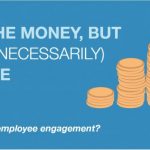Search
Recent Posts
Tags
2012 Presidential Election (2)
Business (8)
college (3)
College attainment (4)
college preparedness (3)
college readiness (8)
college success (2)
Commentary (3)
Company (5)
Convenience Sampling (3)
Customer (3)
Customer satisfaction (3)
Customer service (2)
Data (13)
Data Gathering (5)
education (6)
educational statistics (3)
employee engagement (3)
employee satisfaction (2)
Employment (3)
Ethics (4)
How we think (15)
ICCHE (3)
Ideas (3)
IQS Research (13)
JCPS (3)
Market Research (14)
Methodologies (4)
Political Polls (2)
Polling (5)
qualitative research (4)
Random Sampling (5)
Research (25)
research methods (3)
Research on Research (9)
Research Reviews (3)
Sampling (5)
Semmelweis Reflex (2)
Shawn Herbig (4)
Social Media (3)
social research (5)
Statistics (14)
STATS-DC (3)
Surveys (3)
Text Analytics (3)





Recently, I posted on the benefits and pitfalls of using social media as tool for research. While it is certainly attractive to use such avenues because of the seemingly limitless sample pool (800 million Facebook users alone), researchers must be cognizant of the fact that any sample drawn from social media users will be skewed to typically younger, Western, and more affluent cases. I argued that the Cornell researchers measuring patterns of emotions within humanity were not cognizant of this, or at least overlooked it.
In this particular post, however, I would like to speak more on how new technologies are allowing social media research to become more meaningful and available. Let’s take Facebook as a convenient example. If you are a marketer, for instance, and would like to understand basic demographics such as age and gender of a particular group, then there is no real challenge there. Many social media sites offer such insights. However, what if you wanted to better understand what is being said about a particular product? This may present much more of a challenge, especially if your product is being distributed internationally or even inter-regionally in the U.S.
Enter text analytics. Only until recently has technology caught up with the fast pace social media world to better analyze and understand what is being said. The crux behind Facebook and Twitter, for instance, are feeds and tweets – what people are saying about their life, experiences, and the like. This is what makes being involved in such discourse so appealing: the status update serves as our personal soapbox. We can easily, without fear of stage fright or retaliation, say what we feel – about politics, about things we buy, and about our daily moods. Think how valuable this is from product assessment point of view. And now we have the analytical means to assess this.
The capabilities of text analytics vary greatly and, as with anything, are multifarious in function. The true value, however, exists in its ability to quickly quantify qualitative data. This is how the researchers at Cornell University analyzed emotions. Using such software enables the researcher to assign value to a group of comments (such as comments about mood and emotional tone, or about a product) in sentimental value.
As technology becomes smarter and more capable, a researcher’s ability also is increased. Of course, before text analytics came on the scene we certainly could analyze and quantify qualitative feedback, but it took longer and there was more room for individual error. But in the case of social media, where millions of data points are waiting to be mined, this was not necessarily a possibility.
Let’s take a look at some of the benefits that have been gained as a result of text analytics software:
1. All voices can be heard. Traditional methods of analyzing qualitative data relied on researchers manually reading through comments and subjectively picking up on emerging themes. While good researchers could perform this task exceedingly well, it was time consuming and was open for missing of important ideas. Analytical software uses a series of algorithms that can pick up on consistent themes, thereby eliminating this potential error. Thus, the voice of your customer or whoever you are trying to gauge will not go unheard.
2. Textual data sources are a good for picking up nuances. Quantitative measures cannot capture the specific reasons why someone is unhappy or why they are satisfied. That is why in depth research employs both quantitative and qualitative measures. Comments allow you to pick up on key nuances that may be driving particular opinions.
Here at IQS Reseach, our text anlytics also employs something known as sentiment, which allows for a better understanding of not only what is being said, but also whether what is being said is positive or negative in nature. If a common theme is “cost,” this enables us to understand if what is being about cost is good or bad.
Using these pieces of information as a background for the capabilities of text analytics can help us better understand the true value it provides when analyzing millions and millions of comments in social media avenues. As our forums for thought open to new audiences and are expanded to all areas of the globe, our capability to measure these audiences must also expand. And that is why researchers and consumers of research alike are now beginning to understand the full value of nontraditional methods of analyzing data. How else could we measure something like human emotion on a platform as open and wide as Twitter?